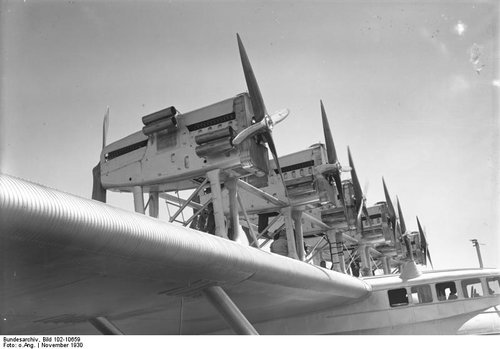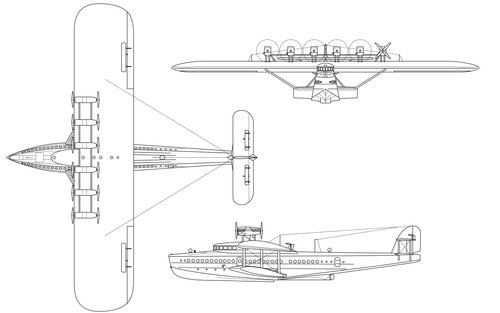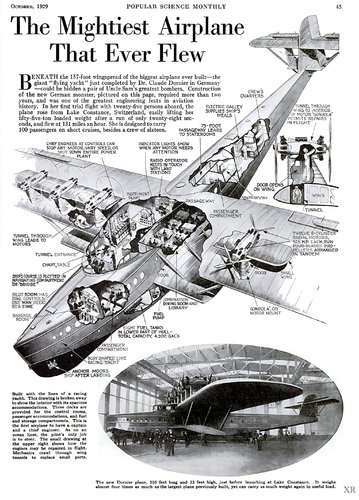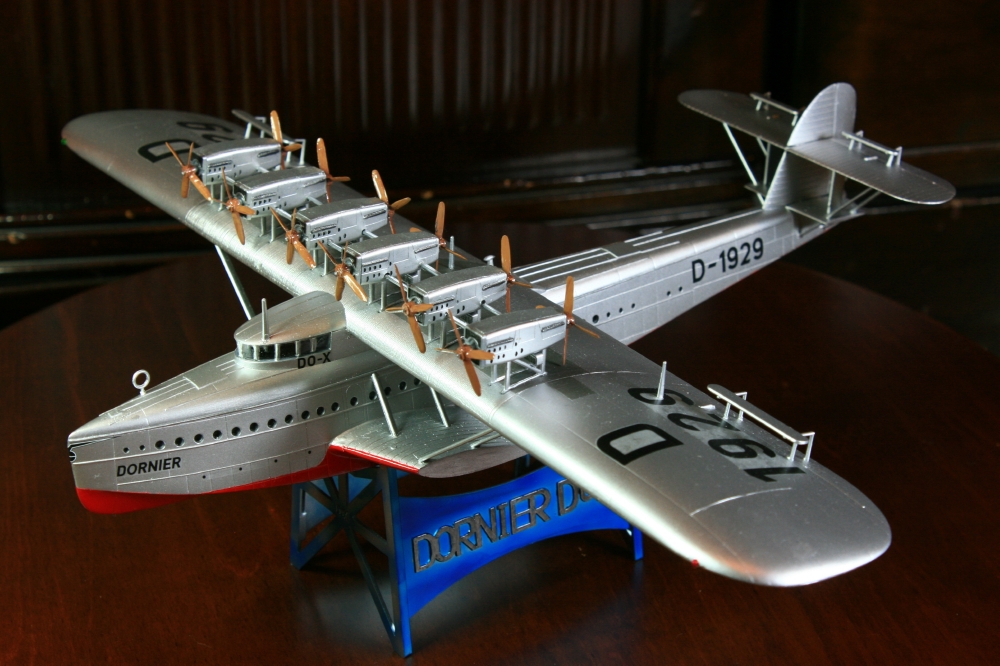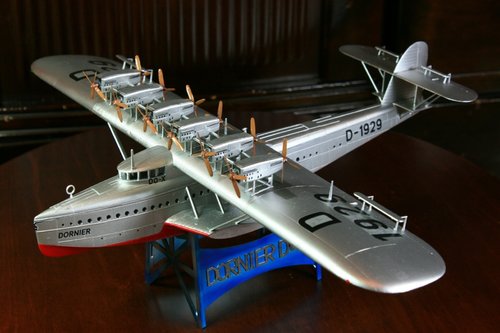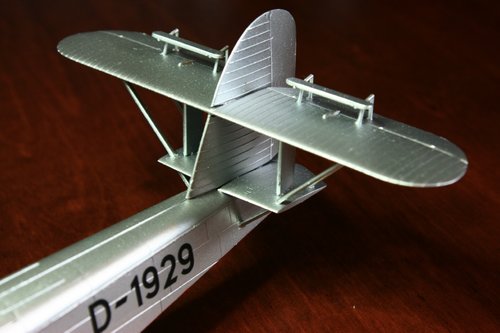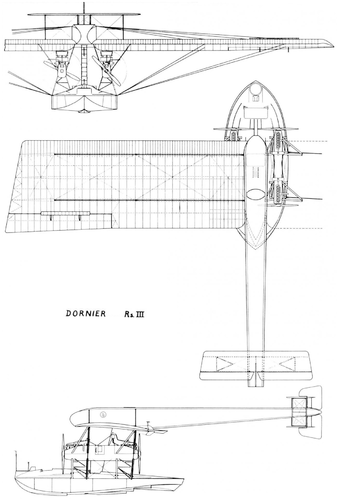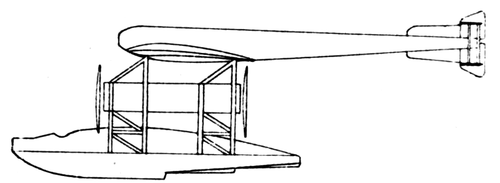You are using an out of date browser. It may not display this or other websites correctly.
You should upgrade or use an alternative browser.
You should upgrade or use an alternative browser.
Dornier flying boat
- Thread starter Maveric
- Start date
- Joined
- 11 March 2006
- Messages
- 8,625
- Reaction score
- 3,806
The tail is already very similar to the Do J "Wal", but the bow
is different from the later "Verkehrswal", the civil version of the
Do Wal. Of the Do Gs II only a mock-up was built, as construction
was prohibited by the allies (According to Gütschow "Die Deutschen
Glugboote"). I've found no photo of the civil Wal version, which match
this 3-view, so I think, Richard is right.
By the way, as we are speaking about the Dornier Wal, in the last Flieger
Revue extra, apart from Deinos fantastic article, there's another one about
the development and rise of the german airforce between the wars, saying
that the often read designation Do 15 for the Dornier Wal is wrong and was
never used by Dornier or the RLM .
is different from the later "Verkehrswal", the civil version of the
Do Wal. Of the Do Gs II only a mock-up was built, as construction
was prohibited by the allies (According to Gütschow "Die Deutschen
Glugboote"). I've found no photo of the civil Wal version, which match
this 3-view, so I think, Richard is right.
By the way, as we are speaking about the Dornier Wal, in the last Flieger
Revue extra, apart from Deinos fantastic article, there's another one about
the development and rise of the german airforce between the wars, saying
that the often read designation Do 15 for the Dornier Wal is wrong and was
never used by Dornier or the RLM .
Gannet
ACCESS: Restricted
- Joined
- 18 March 2008
- Messages
- 43
- Reaction score
- 12
According to Jane's Encyclopedia of Aviation; Cresent Books; Avenel, NJ; 1993 Edition; p328
There is a picture of the Italian Dornier Do J Wal I with the bow very similar to the bow shown in the three view drawing above
The Wal all metal flying boat was a directed development of the Gs I of 1919 (which was broken up) and the uncompleted Gs II. The protoype flew on 6 November 1922. Because of the Allied ban on German construction of this class of aeroplane, production was undertaken by CMASA in Italy with the first aircraft completed in 1923. Wals were also produced by Piaggio and in Japan, the Netherlands and Spain and later in Germany.
There is a picture of the Italian Dornier Do J Wal I with the bow very similar to the bow shown in the three view drawing above
The Wal all metal flying boat was a directed development of the Gs I of 1919 (which was broken up) and the uncompleted Gs II. The protoype flew on 6 November 1922. Because of the Allied ban on German construction of this class of aeroplane, production was undertaken by CMASA in Italy with the first aircraft completed in 1923. Wals were also produced by Piaggio and in Japan, the Netherlands and Spain and later in Germany.
- Joined
- 26 May 2006
- Messages
- 34,911
- Reaction score
- 15,786
- Joined
- 11 March 2006
- Messages
- 8,625
- Reaction score
- 3,806
I really regret, that I didn't take my French lessons at school really seriously, but I think,
this text says something like "those designs were called "Flugschiffe" [Fs] (flying ships) at first,
later changed to the standard term "Riesenflugzeuge" [Rs] later". And this drawing actually bears
a striking resemblance to the Rs.I .
(drawing via http://www.airwar.ru/image/idop/flyboat/rs1/rs1-1.gif)
this text says something like "those designs were called "Flugschiffe" [Fs] (flying ships) at first,
later changed to the standard term "Riesenflugzeuge" [Rs] later". And this drawing actually bears
a striking resemblance to the Rs.I .
(drawing via http://www.airwar.ru/image/idop/flyboat/rs1/rs1-1.gif)
Attachments
- Joined
- 3 September 2006
- Messages
- 1,475
- Reaction score
- 1,472
It's not only you, Jens: The text in French is really hard, with over-compounded sentences for "litterary" style. This guy would benefit from learning to complete one idea before starting the next.
It says:
It says:
The priority given to any plane that could be produced quick, initially deprived
of all financing the ambitious project of Dornier, which was regarded as utopist by
the bureaucrat experts still enamored with dirigibles.
Studies and development of FS-I (Flugschiff 1 or Flying boat), like those for
its follower the FS II were integrally financed by Zeppelin. However, when the
FS-II was adopted by the Navy in 1917, the 2 hydros became Rs-I and II,
Riesenseeflugzeug ie giant sea plane (naming system that we will adopt), it is
almost certain that the company was substantially compensated.
The Navy, in 1914, had compensated its refusal to order from Zeppelin the Rs-I
by an order for 2 traditional-construction VGO giant bombers. The Navy only took
delivery of one, the RML 1, on which Klein killed himself on 10-03-1917. He had
survived by only 2 days his old and famous associate the Graf Zeppelin.
- Joined
- 11 March 2006
- Messages
- 8,625
- Reaction score
- 3,806
Thanks dan !
Must admit, that I not even recognised that text as being more difficult, than usual.
But good to know, that I got this point right. If only my old French teacher would know !
About the point "... were integrally financed by Zeppelin." : At this time "Dornier" aircraft
actually still were Zeppelin products, built by the "Zeppelin Werk Lindau " (Zeppelin plant Lindau),
which in 1917 became a society on its own (Zeppelin Werk Lindau GmbH (ZWL)), but still owned
by the parent company Zeppelin. Claude Dornier only was chief executive then, he became "owner",
or better shareholder in 1922.
Must admit, that I not even recognised that text as being more difficult, than usual.
But good to know, that I got this point right. If only my old French teacher would know !
About the point "... were integrally financed by Zeppelin." : At this time "Dornier" aircraft
actually still were Zeppelin products, built by the "Zeppelin Werk Lindau " (Zeppelin plant Lindau),
which in 1917 became a society on its own (Zeppelin Werk Lindau GmbH (ZWL)), but still owned
by the parent company Zeppelin. Claude Dornier only was chief executive then, he became "owner",
or better shareholder in 1922.
blackkite
Don't laugh, don't cry, don't even curse, but.....
- Joined
- 31 May 2007
- Messages
- 8,819
- Reaction score
- 7,718
Hi! Dornier Rs.Ⅰ
Patrol flying boat in 1915, destroyed by the storm in trial run test period. Only one built.
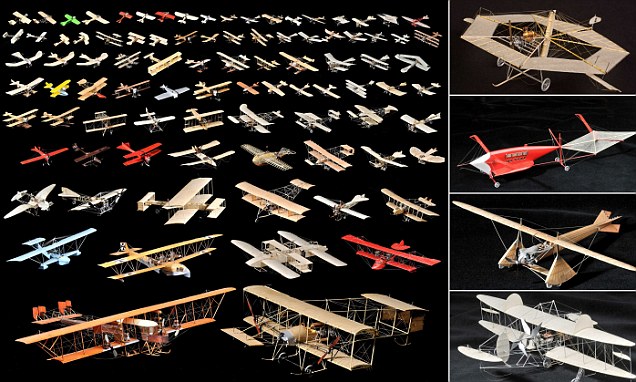
 www.dailymail.co.uk
www.dailymail.co.uk



 flyingmachines.ru
flyingmachines.ru
Patrol flying boat in 1915, destroyed by the storm in trial run test period. Only one built.
- Crew: at least 7
- Length: 29 m (95 ft 2 in)
- Wingspan: 43.5 m (142 ft 9 in)
- Height: 7.2 m (23 ft 7 in)
- Wing area: 328.8 m2 (3,539 sq ft)
- Empty weight: 7,500 kg (16,535 lb)
- Gross weight: 4,763 kg (10,500 lb)
- Powerplant: 3 × Maybach HS (Mb.IV) , 179 kW (240 hp) each

Collection of model planes from first years of flight go on sale
The stunning aircraft were built over a 50-year period by an anonymous and 'reclusive' elderly man who is now selling them through a Gloucestershire auction house.
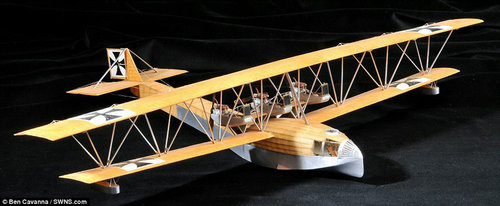
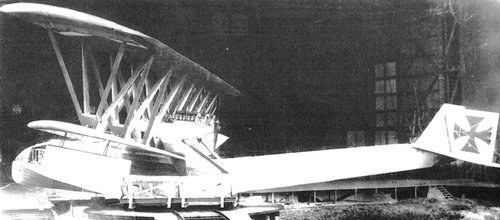
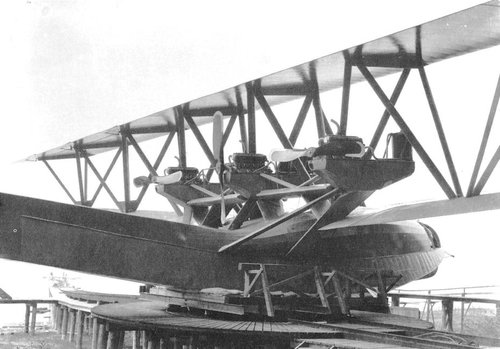
Zeppelin-Lindau (Dornier) Rs.I
Last edited:
blackkite
Don't laugh, don't cry, don't even curse, but.....
- Joined
- 31 May 2007
- Messages
- 8,819
- Reaction score
- 7,718
blackkite
Don't laugh, don't cry, don't even curse, but.....
- Joined
- 31 May 2007
- Messages
- 8,819
- Reaction score
- 7,718
blackkite
Don't laugh, don't cry, don't even curse, but.....
- Joined
- 31 May 2007
- Messages
- 8,819
- Reaction score
- 7,718
Hi! Rs.Ⅱill fated patrol flying boat early and final form. Only one made.
 flyingmachines.ru
flyingmachines.ru



Zeppelin-Lindau (Dornier) Rs.II
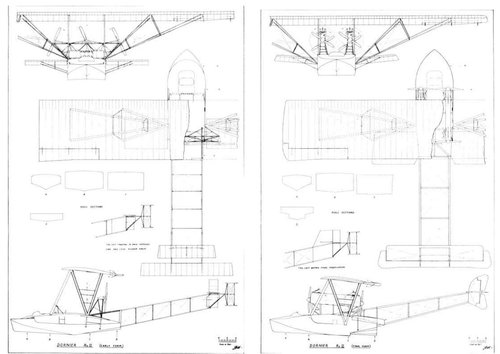
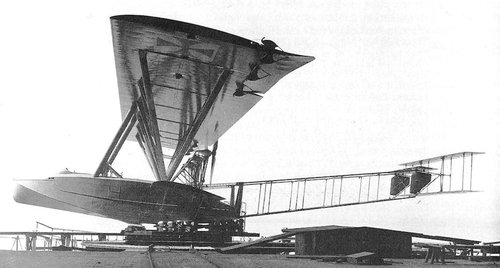
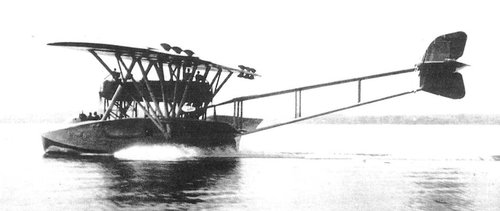
Last edited:
blackkite
Don't laugh, don't cry, don't even curse, but.....
- Joined
- 31 May 2007
- Messages
- 8,819
- Reaction score
- 7,718
The Zeppelin-Lindau Rs.III (Dornier Rs.III) was a large four-engined monoplane patrol flying boat designed by Claudius Dornier and built during 1917 on the German side of Lake Constance at the Zeppelin-Lindau works.
The Rs.III differed in appearance from its predecessors, it was the result of the experience gained from building and flying the Rs.I and Rs.II.
Constructed of steel longerons riveted to Duralumin frames and covered with Duralumin sheet over the forward portion and fabric aft it supported the tail unit which consisted of a biplane tail cellule with elevators and a large central rudder, initially with a long central fin, but later with two smaller fixed fins in the tail cellule. At approximately the mid-wing chord position the fuselage had a cockpit with provision for two machine guns and also housed a sound-proof wireless cabin in the nose.
Flight testing of the Rs.III carried from November 1917, at the Lake Constance factory, with good results. Flying characteristics were generally good, the aircraft proving easy to fly, taxi on water, and capable of taking off in moderate seas. With only minor modifications, the Rs.III was ready for its delivery flight by the end of January 1918.
In 19 February Rs.III performed 7-hour non-stop delivery flight to Norderney.
Operational testing at Norderney cleared the giant Rs.III for service with the Imperial German Navy on 13 June 1918 and it was turned over to the SYK on 27 August 1918 for further Navy tests. After the Armistice the Rs.III was not destroyed immediately but continued flying with the German Navy Air Service on mine clearing duties until the Allied Control Commission finally ordered its scrapping in July 1921.
The Rs.III had proved easy to fly (but with some minor quirks), easy to manoeuvre on the water and durable, due to its metal construction.
Wingspan : 37.00m, Length : 22.75m, Height : 8.2m,
Wing area : 226.00 square meter
Mass empty : 7865kg, Maximum take-off : 10670kg, fuel : 2260kg
Engine Type : 4 DD Maybach HS, Power : 4 x 240hp
Top speed : 135km/h, Cruise speed : 112km/h
Practical range : 1380km, Flight time : 10hour
Practical ceiling : 2700m,
Crew, attendees : 3
Armament: (planned) one machine gun in the nose and two in the fuselage


The Rs.III differed in appearance from its predecessors, it was the result of the experience gained from building and flying the Rs.I and Rs.II.
Constructed of steel longerons riveted to Duralumin frames and covered with Duralumin sheet over the forward portion and fabric aft it supported the tail unit which consisted of a biplane tail cellule with elevators and a large central rudder, initially with a long central fin, but later with two smaller fixed fins in the tail cellule. At approximately the mid-wing chord position the fuselage had a cockpit with provision for two machine guns and also housed a sound-proof wireless cabin in the nose.
Flight testing of the Rs.III carried from November 1917, at the Lake Constance factory, with good results. Flying characteristics were generally good, the aircraft proving easy to fly, taxi on water, and capable of taking off in moderate seas. With only minor modifications, the Rs.III was ready for its delivery flight by the end of January 1918.
In 19 February Rs.III performed 7-hour non-stop delivery flight to Norderney.
Operational testing at Norderney cleared the giant Rs.III for service with the Imperial German Navy on 13 June 1918 and it was turned over to the SYK on 27 August 1918 for further Navy tests. After the Armistice the Rs.III was not destroyed immediately but continued flying with the German Navy Air Service on mine clearing duties until the Allied Control Commission finally ordered its scrapping in July 1921.
The Rs.III had proved easy to fly (but with some minor quirks), easy to manoeuvre on the water and durable, due to its metal construction.
Wingspan : 37.00m, Length : 22.75m, Height : 8.2m,
Wing area : 226.00 square meter
Mass empty : 7865kg, Maximum take-off : 10670kg, fuel : 2260kg
Engine Type : 4 DD Maybach HS, Power : 4 x 240hp
Top speed : 135km/h, Cruise speed : 112km/h
Practical range : 1380km, Flight time : 10hour
Practical ceiling : 2700m,
Crew, attendees : 3
Armament: (planned) one machine gun in the nose and two in the fuselage
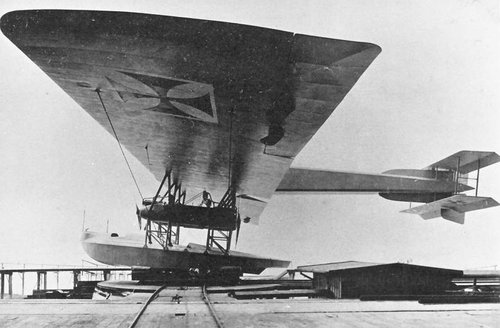
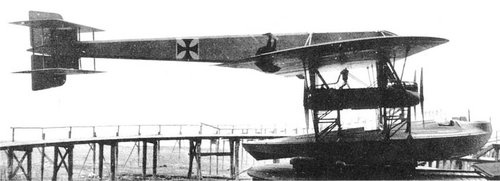
Attachments
Last edited:
blackkite
Don't laugh, don't cry, don't even curse, but.....
- Joined
- 31 May 2007
- Messages
- 8,819
- Reaction score
- 7,718
Last edited:
- Joined
- 11 March 2012
- Messages
- 3,249
- Reaction score
- 3,179
Tonton-42
ACCESS: Secret
- Joined
- 10 May 2014
- Messages
- 367
- Reaction score
- 681
The performance is worthy of interest. On the other hand, we are far from reality because the overmotorization makes it more a Rafale than a DoX of 1929 ...
- Joined
- 26 May 2006
- Messages
- 34,911
- Reaction score
- 15,786
From my files,and a part of it was from this site,
in 1943 - after the interruption of the construction work on the large
eight-engine flying boat Do.214- the Dornier works developed another
project of a slightly smaller, lighter and simpler flying boat, designated
by the factory as P.174 , and by the Reichsluftfahrtministerium as Do 216 .
The aircraft was modelled on its predecessor, but a less complex, single-
deck fuselage design was envisaged. The three-section wing was to have
a rectangular centre wing and trapezoidal outer sections. As in the Do 214,
Dornier designers dispensed with the stabilising floats under the wings,
and their role was to be fulfilled by long protrusions on the fuselage
waterline, stabilising the huge aircraft on the water while swimming.
Regardless of this, the wingtips were bent downwards and formed into
floats to additionally stabilise the aircraft during large rolls in rough seas.
The aircraft was to be powered by either four Junkers Jumo 222 diesel
engines with a take-off power of 2,500 hp each (in the version designated
P.174/I or Do 216/1 ), placed in pairs in two gondolas on each wing in
an arrangement of two pulling and two pushing engines, or six Daimler-
Benz DB 603C petrol engines (in the P.174/II version - otherwise Do 216/2 )
with a power of 1,750 hp each, with these additional two engines to be
mounted in a pulling arrangement in gondolas outside the previous pair
of engines. The aircraft was to serve as a multi-purpose long-range combat
aircraft for patrol, reconnaissance and combating sea targets, and therefore
it was intended to be equipped with eight gunnery positions and bomb
launchers under the outer parts of the wings.
The Do 216 flying boat - like its predecessor - did not progress beyond
the design stage, as the RLM soon lost interest in this type of design as
it was completely useless from the point of view of the needs of the
Reich's defence.
in 1943 - after the interruption of the construction work on the large
eight-engine flying boat Do.214- the Dornier works developed another
project of a slightly smaller, lighter and simpler flying boat, designated
by the factory as P.174 , and by the Reichsluftfahrtministerium as Do 216 .
The aircraft was modelled on its predecessor, but a less complex, single-
deck fuselage design was envisaged. The three-section wing was to have
a rectangular centre wing and trapezoidal outer sections. As in the Do 214,
Dornier designers dispensed with the stabilising floats under the wings,
and their role was to be fulfilled by long protrusions on the fuselage
waterline, stabilising the huge aircraft on the water while swimming.
Regardless of this, the wingtips were bent downwards and formed into
floats to additionally stabilise the aircraft during large rolls in rough seas.
The aircraft was to be powered by either four Junkers Jumo 222 diesel
engines with a take-off power of 2,500 hp each (in the version designated
P.174/I or Do 216/1 ), placed in pairs in two gondolas on each wing in
an arrangement of two pulling and two pushing engines, or six Daimler-
Benz DB 603C petrol engines (in the P.174/II version - otherwise Do 216/2 )
with a power of 1,750 hp each, with these additional two engines to be
mounted in a pulling arrangement in gondolas outside the previous pair
of engines. The aircraft was to serve as a multi-purpose long-range combat
aircraft for patrol, reconnaissance and combating sea targets, and therefore
it was intended to be equipped with eight gunnery positions and bomb
launchers under the outer parts of the wings.
The Do 216 flying boat - like its predecessor - did not progress beyond
the design stage, as the RLM soon lost interest in this type of design as
it was completely useless from the point of view of the needs of the
Reich's defence.
Similar threads
-
-
-
-
-
French aircraft projects of WWI - Search
- Started by Maveric
- Replies: 0

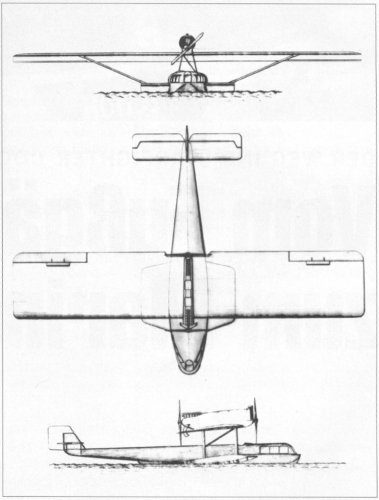
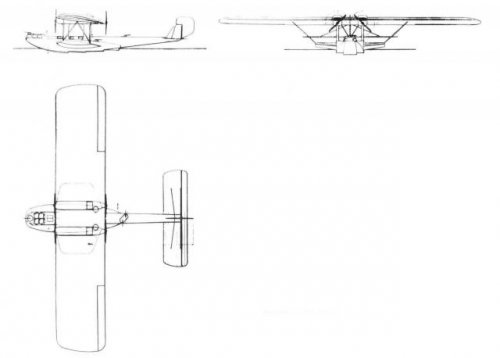
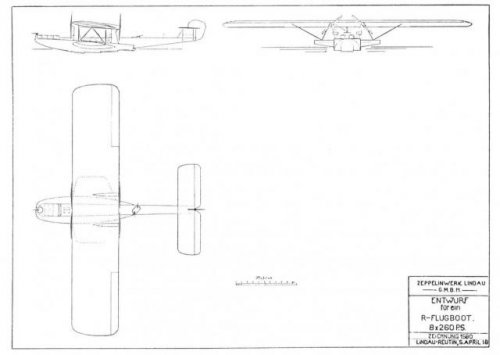
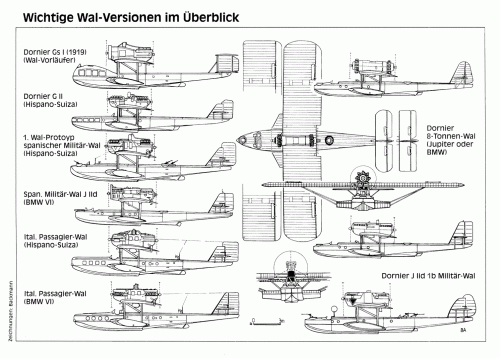
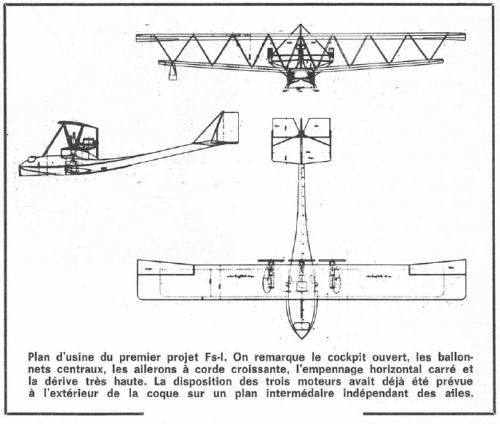
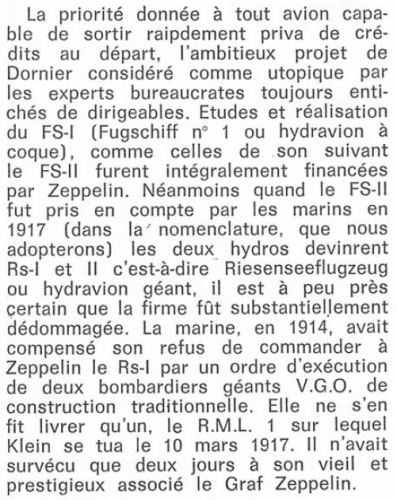
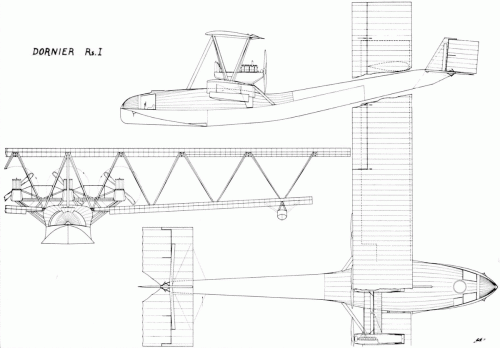
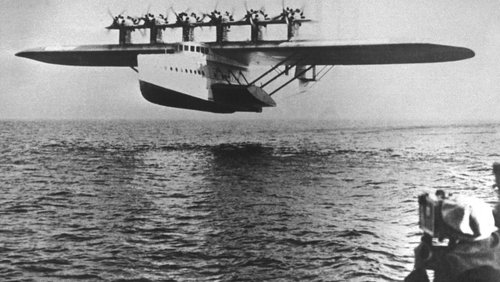
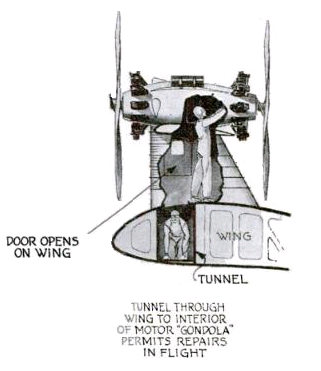
![Dornier Do X [LIMITED to 500px].jpg Dornier Do X [LIMITED to 500px].jpg](https://www.secretprojects.co.uk/data/attachments/159/159713-ef72696520295a2ab9a7c113e4bf9eb1.jpg)
